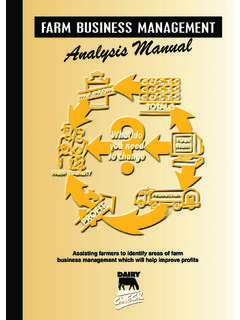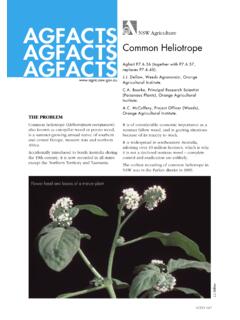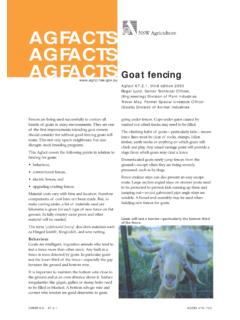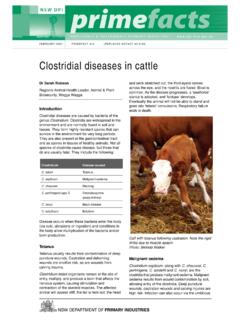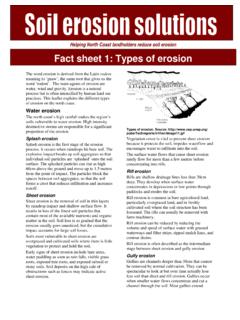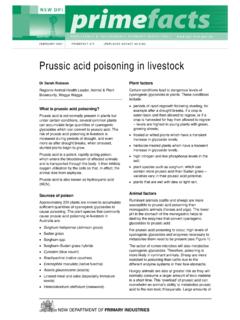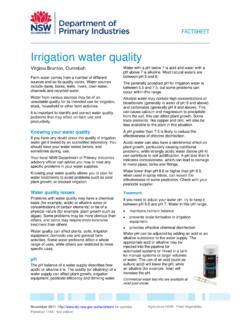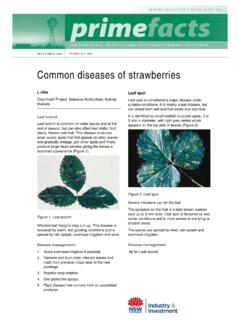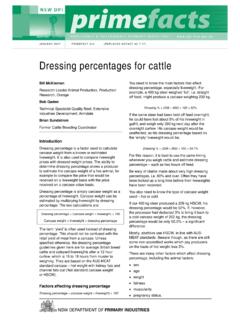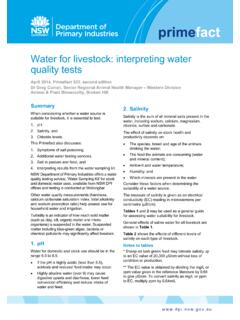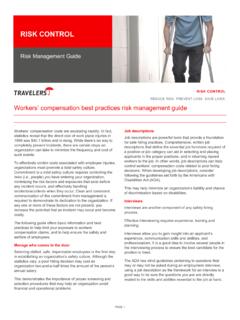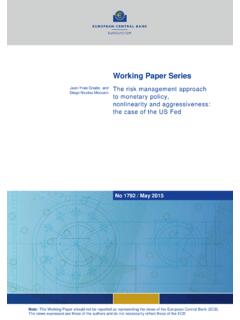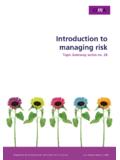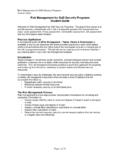Transcription of Procedure - Aviation risk assessment and management …
1 NSW Department of Primary Industries Reference: TRIM INT11/73583. Emergency management Unit, Biosecurity NSW. Private Bag 4008 Narellan NSW 2567. Tel: 02 4640 6467 ; 02 6391 3771. Email: Procedure Aviation Risk assessment and management process Authorised by Agricultural Protection Officer (Policy) Authorisation date 1/6/2012. Authorisation period Effective date 1/1/2012. Prepared by Agricultural Protection Officer (Policy). Emergency management Officer Contact Officer Agricultural Protection Officer (Policy). REVISION HISTORY. Version Date Amendments Section Details 2 Nov 11 For approval 2 31 May 12 All Remove task from risk assessment ; replace Annex A with short example; include reference section (S 6); update approving Director (S ).
2 Procedure - Aviation Risk assessment and management process V 2 Page 1 of 20. 31 May 2012. NSW Department of Primary Industries Reference: TRIM INT11/73583. 1. Application / Scope This Procedure shall be used to assist in the development of new task profile to ensure that the potential risk of an operation falls within Departmental risk tolerance. Every Aviation task requires a task profile and associated risk assessment . Where a task can be associated with an existing task profile and risk assessment , the person planning the task shall refer to and comply with the task profile. If the task is covered by a task profile and risk assessment and no deviations are foreshadowed, then the task may proceed without further authorisation, although all Aviation operations should involve ongoing operational risk assessments by the pilot and any crewmembers throughout a flight.
3 If any task profile is altered, the corresponding risk assessment must be reviewed. If Planning or tasking personnel recognise that a proposed task falls outside an existing task profile, then a new task profile and associated risk assessment shall be developed in consultation with relevant stakeholders. A task that does not comply with existing task profiles and associated risk assessment shall not be conducted without completing above and gaining appropriate approvals. A new task profile and associated risk assessment may also be used as the basis for identifying any new procedures or resources that may be required.
4 All staff associated with aircraft operations shall have ready access to task profiles and associated risk assessments at all times. NSW DPI Aviation policy requires, the effective and efficient use of aircraft to achieve operational objectives within acceptable risk parameters. All aircraft utilisation shall comply with national and state regulations, rules, and standards.. The risk assessment and management process is not intended to stop operations, but rather to ensure the level of associated risk is identified, understood, assessed and controlled. Understanding risk and its control is central to Departmental Aviation management .
5 Risk management does not end with the development of a risk assessment , but is an ongoing process by all those involved in the use or management of Aviation . Aviation operators should have Safety management Systems that include risk assessment and management . The Department's Aviation risk management system takes a qualitative rather than quantitative approach although historical data is relevant in determining the likelihood of an event occurring and provides some indication as to the potential consequence. The Department's risk assessment process involves identifying hazards, assessing their consequence and likelihood, and identifying risk mitigation strategies.
6 This Procedure is issued to assist with the development of Aviation -relation risk assessments. The assessments generally conform to the principles of AS/NZS ISO. Procedure - Aviation Risk assessment and management process V 2 Page 2 of 20. 31 May 2012. NSW Department of Primary Industries Reference: TRIM INT11/73583. 31000:2009 Risk management Principles and Guidelines and IEC/ISO 31010:2009. Risk management Risk assessment techniques . Risk assessment is an integral part of the Expression of Interest and task profile processes. They are inextricably linked and should be cross-checked to ensure that no deviations or contradictions develop.
7 Relevant elements of a task profile can be used to determine the context of the risk assessment and the subsequent assessment can be used to further develop the task profile. The context can include existing or planned risk controls, but these still need to be evaluated in the risk assessment . All personnel involved in Aviation resource planning and management should use this Aviation risk management process during both planning and operational employment of Aviation assets. Accident and incident causation models illustrate the importance of considering risks at all levels. The models focus on the observed factors involved in accidents and incidents which show the potential for a number of seemingly independent and inconsequential events that when considered in concert, present a significant risk.
8 The risk management process adopted by the Department is designed to identify hazards, enable them to be treated and monitor the success or otherwise of the treatments. Aircraft operators who are subcontractors to Department may also be required to demonstrate the implementation of a similar process . The risk management process is also used to identify policies and processes that may require amendment in order to streamline and make aircraft operations in support of Department safer. Aviation risk assessment and management of Aviation tasks can be daunting for those unfamiliar with Aviation hazards, risks , practices and regulations and therefore it is important that Aviation expertise input is sought.
9 Due to the safety and financial considerations and imperatives in the provision of Aviation services, it cannot be over- stressed that the end-user needs to know what their objectives are for the use of Aviation services so that the assessment is relevant. As noted before, the Department's risk assessment process involves, in part, the identification of risk mitigation strategies. The three key mitigation principles are: a) Do not accept unnecessary risk Unnecessary risk-taking usually comes without a commensurate return in potential benefits or opportunities. The most logical options for accomplishing tasks are those that meet all task/contractual requirements with the least risk possible to personnel and property.
10 B) Accept risk only when the potential benefits outweigh the potential cost Risk in Department Aviation operations is judged to be tolerable if the importance and benefits of the task and the desired outcomes are sufficiently significant to justify acceptance of the associated risks . Extreme risk can only be accepted by the Director General or delegate and the aircraft operator (see Figure 3). Procedure - Aviation Risk assessment and management process V 2 Page 3 of 20. 31 May 2012. NSW Department of Primary Industries Reference: TRIM INT11/73583. c) Risk decisions are made at the appropriate management level within the Department, the management of the sub-contracting company and the unit performing the task Those people in the organisations and the individual aircraft operator that are accountable for the conduct of a flight and/or task shall be included in the risk assessment and decision process .
